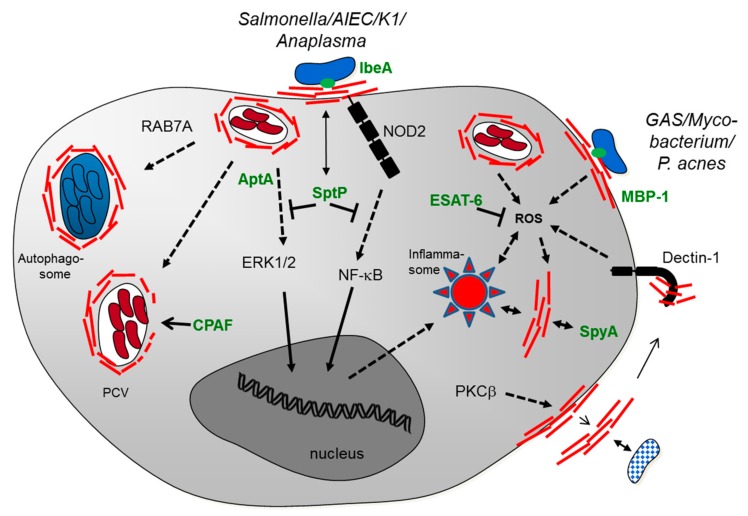Figure 1.
Tentative scheme of the cellular interactions of vimentin with bacterial pathogens. Cell surface-located vimentin (red lines) is involved in binding of the pathogen and subsequent invasion. A variety of intracellular vimentin-pathogen interactions is depicted, mainly occurring in human or murine macrophages. Cytosolic vimentin (red lines) is closely associated to the pathogen-containing vacuole (PCV) and to the autophagosome. The interaction of vimentin with innate immune signaling involves the pattern recognition receptors dectin-1, NOD2, and NLPR3 (inflammasome). PPR-mediated innate signaling further results in activation of MAP kinases (ERK1/2) and NF-κB. Pathogen-triggered intracellular reactive oxygen species (ROS) production is associated with vimentin upregulation. A few bacterial factors have so far been identified that can mediate vimentin binding (IbeA, MBP-1) or interfere with vimentin functionality (SptP, SpyA, CPAF, AptA; see Table 1 for their origin), possibly by proteolysis or post-translational modification of vimentin. Phosphorylation of vimentin is associated with vimentin secretion that might be involved in pathogen trapping and killing (indicated in bottom right hand corner). Further abbreviations: AIEC, adherent-invasive E. coli; K1, E. coli K1; GAS, Group A streptococci; P. acnes, Propionibacterium acnes; PKCβ, Protein kinase C beta; RAB7A, Ras-related protein Rab-7a.

